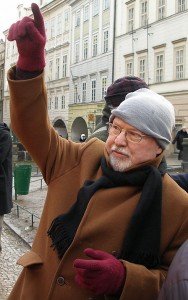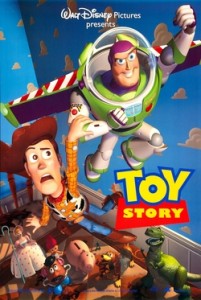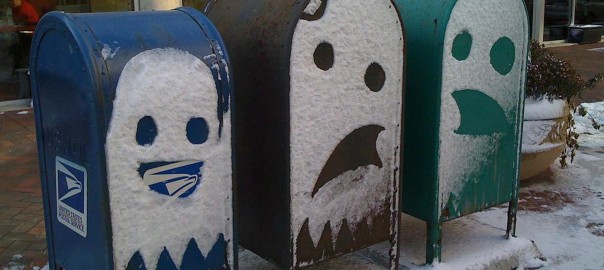It’s almost a simplistic metaphor, but … picture three boxes: order, disorder, reorder. … [I]f you read the great myths of the world and the great religions, that’s the normal path of transformation.
–Richard Rohr
The words above are taken from a recent On Being podcast, where the host Krista Tippett interviewed the American Franciscan friar Richard Rohr. I’m not one for listening to religious programming, given my leanings towards the non-dogmatic and agnostic Middle Way, but I’ve found that this weekly series hosts a variety of guests with a range of beliefs, from diverse backgrounds and traditions. Krista Tippett, as host, guides the discussions in such a way that the conversations are always mature, nuanced, and tolerant of ambiguity – truly conversations rather than sycophantic platform-building or antagonistic arguments. Furthermore Richard Rohr described himself as being “on the edge of the inside” of traditional Catholicism, pushing at the boundary of Christianity in a very liberal, mystical way.
 While I was listening yesterday to the episode featuring Richard Rohr (and I recommend listening to the full ‘unedited’ version of the conversation rather than the 50-minute ‘produced’ show) many interesting facets revealed themselves, but I was particularly intrigued to hear about his “three box” metaphor for the path of adult spiritual development. I understand that in his 2012 book Falling Upward he further explores the idea of the two halves of life, intending to show that those who have fallen, failed, or gone down in their spiritual progress are the only ones who understand ‘up’. However, I’ve not read that book(!) and what I’m going to discuss here is based on what I heard during a part of the interview with Krista Tippett.
While I was listening yesterday to the episode featuring Richard Rohr (and I recommend listening to the full ‘unedited’ version of the conversation rather than the 50-minute ‘produced’ show) many interesting facets revealed themselves, but I was particularly intrigued to hear about his “three box” metaphor for the path of adult spiritual development. I understand that in his 2012 book Falling Upward he further explores the idea of the two halves of life, intending to show that those who have fallen, failed, or gone down in their spiritual progress are the only ones who understand ‘up’. However, I’ve not read that book(!) and what I’m going to discuss here is based on what I heard during a part of the interview with Krista Tippett.
As it is rather lengthy, I’ve split this discussion into three separate blog posts: in this, the first, I discuss the synthetic metaphorical three box model in the context of a well-known a modern myth. In the next (second) post I will consider how Rohr’s three box model might be usefully applied to political polarisation in society. In the third and final blog post I will frame my own ‘spiritual’ development in terms of Rohr’s model.
A modern myth – Toy Story
Now, I’m not sure to what extent the Disney/Pixar film Toy Story counts as a great myth of the world, but it’s a story that’s familiar to anyone in the Western world who has grown up – or has had children grow up – in the past 30 years. I have a soft spot for it, having it watched it first (somewhat guiltily) in the cinema as an 18-year old, and more recently on DVD with my son and his cousins. I’m going to use the plot of Toy Story as an example of this “three box” metaphor for the path of transformation – and note that I’m using the term ‘myth’ its original sense as a story richly imbued with archetypical meaning, and not meaning a widely-believed falsehood.
 Anyway, in Toy Story the character Woody, the old-fashioned pull-string cowboy doll, starts off in the metaphorical “order box” as Andy’s favourite toy, de facto leader of all Andy’s toys, and comfortable with his position in this microcosm. He is forced into the “disorder box” by the arrival of Buzz Lightyear, the astronaut action figure, who upsets the social order and brings out feelings and behaviour in Woody that he’s not had to deal with before. This disorder is a product of circumstances beyond Woody’s control: he wouldn’t have deliberately chosen to break with the status quo as he was so comfortable within it. His sense of self-esteem is closely linked with his role as Andy’s favourite plaything.
Anyway, in Toy Story the character Woody, the old-fashioned pull-string cowboy doll, starts off in the metaphorical “order box” as Andy’s favourite toy, de facto leader of all Andy’s toys, and comfortable with his position in this microcosm. He is forced into the “disorder box” by the arrival of Buzz Lightyear, the astronaut action figure, who upsets the social order and brings out feelings and behaviour in Woody that he’s not had to deal with before. This disorder is a product of circumstances beyond Woody’s control: he wouldn’t have deliberately chosen to break with the status quo as he was so comfortable within it. His sense of self-esteem is closely linked with his role as Andy’s favourite plaything.
However, through the messy process of being taken out of his comfort zone and learning through novel experiences, Woody eventually is able to move into the metaphorical “re-order” box by integrating his conflicting desires and meaning, establishing a new equilibrium where he and Buzz can cooperate in their roles as Andy’s ‘favourite toys’. However, and more importantly, Buzz and Woody also enjoy the new meaning and richness that comes from their relationship with each other, a relationship that has value beyond their existence as playthings for a child.
By the end of the film Woody has developed a new perspective on his existence, one that encompasses the need for constructed order and the inevitability of uncomfortable disorder – he knows that suffering is part of the deal, and is better embraced than pushed away. Not only is Woody now wiser, but his new worldview better addresses the changing conditions, as Andy is growing up (as seen in the sequels, particularly Toy Story 3) and will no longer ‘need’ Woody, depriving him of his original raison d’etre when he was comfortably housed in the “order” box.
Note that, alongside Woody’s development, Buzz follows a parallel path of transformation. His original existence – where he truly believed himself to be a space ranger crash-landed on a hostile alien planet – may have been delusional, but it was well and truly ordered. He had a sense of who he was, what his mission was, and was confident in his superiority and rightness. Only when his delusion was eroded by continued contact with the ‘real’ world did he have to face up to disorder. Buzz’s fall from order was harsh, but he made progress through the disorder and – by uniting with Woody against common enemies – he was able to reorder his worldview into something more mature mature, integrating his love of himself with his newfound love for others (as opposed to his earlier ‘duty’ to others).
At the close of this first installment in the series I invite you to participate using the comments section below. If you can see how this model can be further extended to Toy Story, or other myths, please go ahead and share your thoughts. If you can see limitation of this model in this context of analysing mythic narratives then please also jump in. In the second installment I will move on to consider how the order-reorder-disorder model might shed some light on the problem of political polarisation in society, and in the third and final installment I’ll be viewing my own spiritual biography through the lens of this model. I hope that you will join me there…
- Continue to Order, disorder, reorder – Part 2…
- Jump ahead to Order, disorder, reorder – Part 3
Featured image of US mailboxes in the snow courtesy of pixabay.com
Photograph of Richard Rohr by Svobodat [License: CC BY-SA 3.0], via Wikimedia Commons
The Toy Story image is a low resolution version of the Disney-copyright poster, used for illustration only under ‘fair use’

